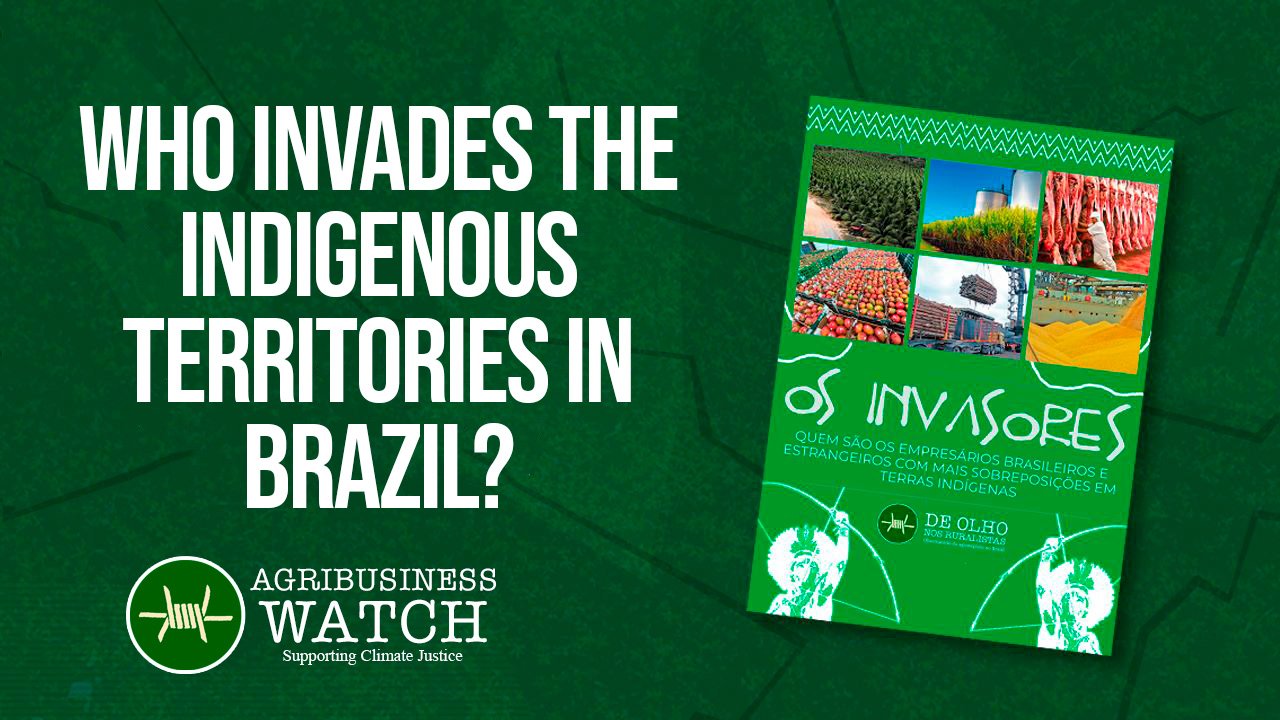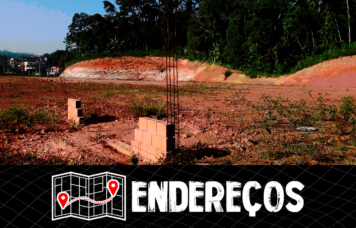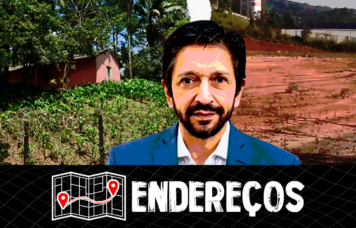A survey published by the research group Agribusiness Watch identified 1,692 farms with direct incidence on indigenous territories; behind the overlaps are agribusiness giants, arms industry and investors from the five continents
By Bruno Stankevicius Bassi
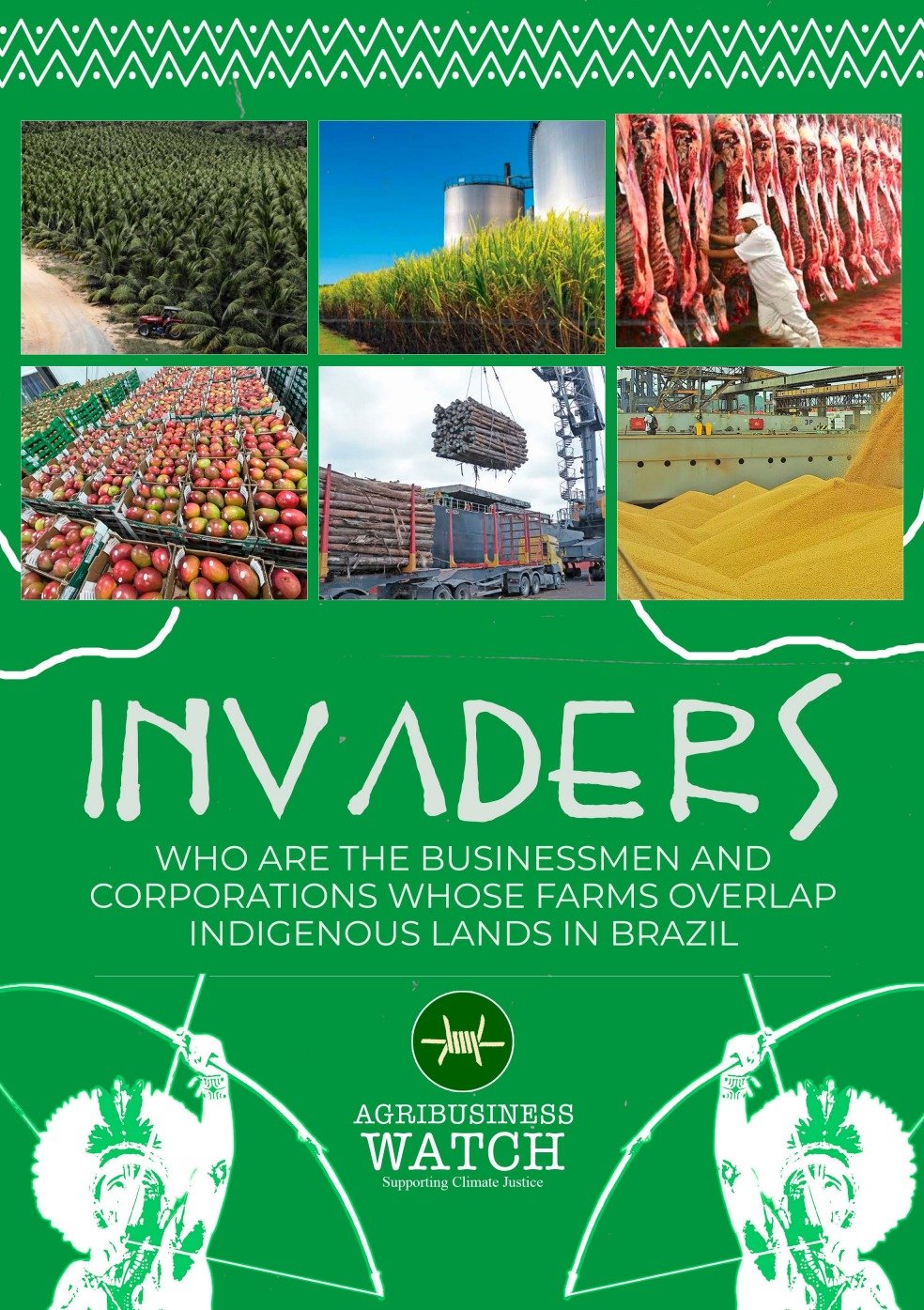 A new study sheds light on one of the main obstacles to the enforcement of the indigenous peoples rights in Brazil. Produced by the research observatory Agribusiness Watch, the report “Invaders: who are the businessmen and corporations whose farms overlap indigenous lands in Brazil” reveals, in first hand, the names of individuals and companies behind 1,692 cases of overlapping farms in territories delimited by the National Foundation for Indigenous Peoples (Funai).
A new study sheds light on one of the main obstacles to the enforcement of the indigenous peoples rights in Brazil. Produced by the research observatory Agribusiness Watch, the report “Invaders: who are the businessmen and corporations whose farms overlap indigenous lands in Brazil” reveals, in first hand, the names of individuals and companies behind 1,692 cases of overlapping farms in territories delimited by the National Foundation for Indigenous Peoples (Funai).
Among the multinational groups linked to farms incident in Indigenous Territories (ITs) there are subsidiaries and shareholders of some of the main agribusiness groups operating in the country, such as Bunge, Amaggi, Bom Futuro, Lactalis, Cosan, Ducoco, and Nichio. Among the economic sectors, producers of soybeans and maize, beef, wood, sugar and ethanol, and fruits are the main responsible for the overlaps.
The study also shows the participation of banks and investment funds in the economic pressure against ITs. Itaú (through its subsidiary Kinea) and Bradesco, the two largest private banks in Brazil, are the main names on the list, followed by XP, Gávea Investimentos, the World Bank’s International Financial Corporation (IFC), and Mubadala Fund.
The connections with the economic power do not stop there. Among the cases covered in the report, there are direct connections with organized crime. Going from the close ties between landowners in the Amazon with the Italian mafia Cosa Nostra, to an illegal miner linked to the largest diamond smuggler in the world.
“It is the national and international capital, legal or illegal, the responsible for the violence committed against indigenous communities,” says the observatory’s director, Alceu Luís Castilho. “The planet that looks upon Brazil to demand the preservation of the Amazon is the same planet that needs to know better who is financing the destruction.”
Click here to download the full report. Below, the video about the dossier:
REPORT DETAILS OVERLAPS ACROSS THE COUNTRY

Over the course of six months, a multidisciplinary team composed of journalists, geographers, historians, and a legal specialist went through the information on rural properties registered and certified by the National Institute for Colonization and Agrarian Reform (Incra), obtained from three dataset: the Land Management System, the National Rural Register System and the National Property Certification System. From the initial list, a cross-reference was made with the land cover and land use metadata of the MapBiomas – Collection 7 platform, with information available until 2021, in order to obtain details about the economic destination of the overlapping areas.
Altogether, the overlaps in indigenous lands encompass 1.18 million hectares, an area the size of Lebanon. Of this total, 95.5% are in territories pending demarcation. The data also show that 18.6% of the overlapping area is used for agricultural production. Of this total, 55.6% is occupied by pasture and another 34.6% by soy.
This advance came at the cost of environmental preservation. By cross-referencing the overlaps with satellite data from the National Institute for Space Research, a deforestation of 46,900 hectares was identified between 2008 and 2021, considering only the overlap areas in ITs.
The report also points out the existence of a direct correlation between the overlaps and the data on conflicts and deaths of indigenous people, especially in the territories of the Kanela/Timbira people, in Maranhão; Guarani Kaiowá and Terena, in Mato Grosso do Sul; and Pataxó in Bahia.
All the land information used in the report is, as of today, available to the public interested in exploring this enormous volume of information. The complete database with the 1,692 overlaps can be accessed here.
OVERLAPS CONNECT INDIGENOUS LANDS TO FOREIGN CAPITAL
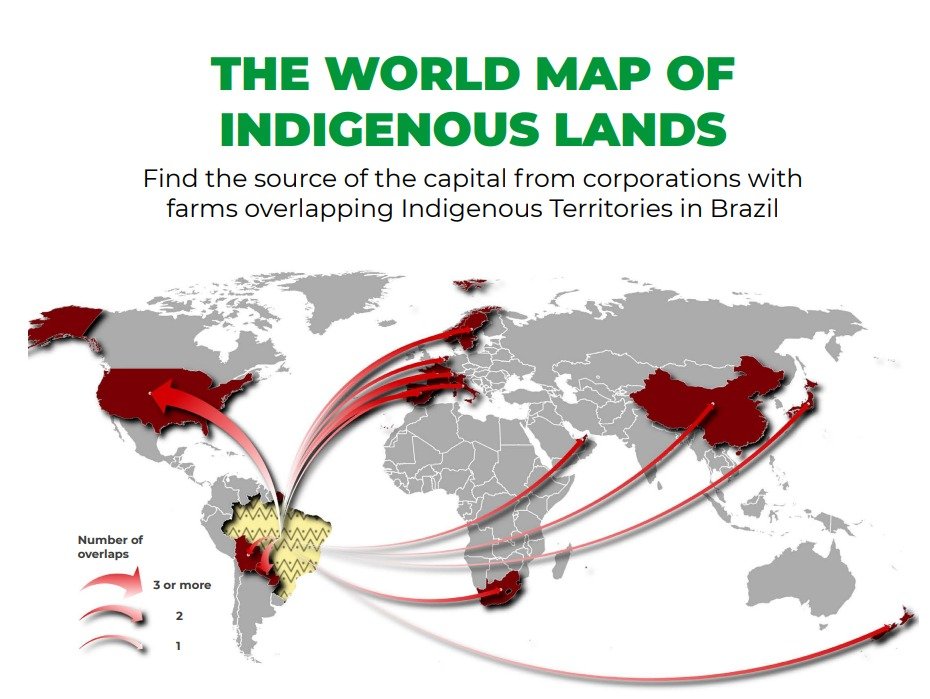 The invasion of Indigenous Territories in Brazil is systemic. Although most of the conflicts and violence are concentrated at the local level – miners, loggers, and gunmen at the behest of landowners – it is in the so-called “modern” agribusiness power centers that the profits from this agroexporting model are concentrated.
The invasion of Indigenous Territories in Brazil is systemic. Although most of the conflicts and violence are concentrated at the local level – miners, loggers, and gunmen at the behest of landowners – it is in the so-called “modern” agribusiness power centers that the profits from this agroexporting model are concentrated.
Carrying out qualitative research based on land data from Incra, Agribusiness Watch identified the origin of the capital of 156 individuals and corporations among the holders of the 1,692 overlaps in ITs. From multinational companies based in other countries to foreign investors, it was possible to trace economic connections in fourteen countries, spanning the five continents.
The cases include from neighboring countries such as Paraguay and Bolivia, base of operations for two Brazilian entrepreneurs who emigrated in the 2000s, to New Zealand, on the other side of the world.
Within Brazil, the capital flow also has a clear trend, migrating from the South and Southeast of the country to the North, Northeast, and Center-West regions. Paraná leads the survey, being home to 43 individuals or companies with overlapping ITs. The state is followed by São Paulo, with 34 identified farmers. In a movement that emulates the slave-hunt missions of the 18th century, known in Brazil as “bandeiras”, rural landowners leave the South towards the Midwest, Northeast, and North regions. Or rather, they don’t leave. In the new overlapping “bandeiras”, it is the capital that travels.
| Bruno Stankevicius Bassi is project coordinator for Agribusiness Watch |


